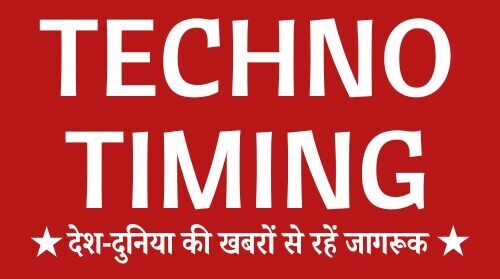Essential Requirements for Opening a Bank Account: Sara’s Journey | TECHNO TIMING
The question: Sara Would Like To Open A Bank Account. What Will She Need To Do This? Choose Three Answers. A bank account is a must have for personal finance in this tech age whether for savings, direct deposit or e-transfer. But opening a new bank account is not as easy as that. You need some background knowledge and organize your documents before you can open an account. The most important one is an ID; this document proves that the account holder is real and the bank has nothing to fear about. Among the others are proof of address and passport or driver’s license as well which are also used in other requirements.
Different types of accounts, such as checking and saving accounts from different banks with different interest rates, maintenance fees and banking benefits can make it hard to meet the requirements when opening an account.
When applied for, this article will guide you step by step to those who want to open an account: gathering some identification materials as may be required including social security number, birth certificate or state ID such as Texas ID card or California ID card; selecting the bank accounts that fit their financial needs and should also consider facilities like online banking and mobile banking; going through the application process either in person or online; and finally making the first deposit. By knowing these basic steps and preparing all the necessary documents before, you can make your application status less complicated, minimize potential overdraft fees and choose the best banking option for your financial goals.
Gather Identification
You need to bring an ID to open a new account with a bank. This section will describe the types of ID required by most banks.
Primary ID
A primary ID is usually required by banks to verify the account holder. Primary IDs fall under this category such as U.S. driver’s license, U.S. passport or state issued REAL ID card. Military personnel can use their U.S. Armed Forces ID or Department of Defense ID Card for this.
Secondary ID
If primary ID cannot be presented, banks may allow two secondary IDs to be used for those without picture and one with picture. Some acceptable alternatives are student ID (for minors), United States passport card, health insurance card or utility bill. Other documents that are valid are public assistance ID or voter registration card.
Proof of Address
You need to show proof of residency through current address documents. This can be a lease or mortgage, an electric bill with today’s date, a bank statement/credit card statement or utility bill that’s not more than 2 months old. Paperless billing is okay; just download and print. This will allow the bank to verify your address when opening the account.
These also prove who you are and where you live so opening an account is faster.
Choose the Right Account
When choosing the right account, a person has to consider many things including the best account for their needs. In this article we will look at the differences and advantages of checking accounts, savings accounts, business accounts and joint accounts.
Checking Account vs. Savings Account
Checking accounts are best for daily transactions like buying and paying bills, often with debit cards and low interest earning. Savings accounts are best used as a tool to earn higher interest rates on time deposits and less withdrawal freedom to encourage saving habits.
Business Accounts
For business owners, separating personal finances from business transactions is crucial. Business checking accounts are for businesses and has features like user roles, spending controls and integration with accounting software to help manage business finances.
Joint Accounts
Families, couples and parents with their kids will benefit from co-ordinated finance management by using joint accounts. They should have good communication among themselves and trust each other when one of them is using the account. Such accounts are helpful in paying expenses together and can simplify financial life when all cash is combined in one.
This way, you can know what type of bank account is best for you based on your needs and personal financial goals.
Apply Now
Online Application Steps
To start an online bank account application, individuals should find the “apply now” button on the bank’s website and follow the prompts. As a requirement, they need to provide personal information which includes social security number, date of birth, phone number and email address. Some banks may also require to upload scanned copy of government issued ID. They also have a choice to open their account like savings or checking.
In-Branch Application Steps
Some people prefer or need to apply in-branch and visiting a bank branch is a must especially if extra identification is required because of no credit history or past banking problems. Bring your ID, verifiable address and possibly some initial deposit as low as possible. Some banks may require you to sign a signature card for authentication purposes. Additional papers like co-signing papers if account is joint or for a minor.
Both procedures aim to make opening a new bank account easier by ensuring all details and papers are in order.
Initial Deposit
An initial deposit is often required when opening a bank account, the amount of which depends on the bank and type of cash management. For normal checking and savings accounts, the initial deposit is usually between $25 to $100. Some banks have options with no minimum deposit when opening which helps reach more people.
Minimum Deposit Requirements
Choosing the best bank account has a critical factor of minimum deposit. For premium accounts that have other services like reduced trading commissions or financial advice, this amount varies from bank to bank. Reduced financial service providers’ minimum deposits have been encouraged by the competition which has fast tracked the opening of accounts by many citizens across the country.
Deposit Methods
Banking is now more convenient when it comes to deposits and many deposit methods are available. Traditional ways include going to a bank branch or using ATM machines. This has led to digital banking which offers options like mobile check deposits where you can just take a photo of the cheque and start the deposit process. Another popular method is direct deposit; this is used by employers to pay salaries or benefits as it allows their money to be credited directly to employees’ accounts automatically. Some banks also allow this in selected retail branches like Walmart where you can deposit cash to an account by swiping a debit card.
Conclusion
These are the steps and info on how to open a bank account, remember documentation, saving goals and online process. With these in mind you will make the right decisions when it comes to opening a savings account.
The process of getting an account in a financial institution may seem long but it’s for future security and organization of money. This is very important for personal finance management; this will also help in saving growth and daily transactions. In today’s fast pace world we have to relook into our banking needs and how it affects our finances. That’s the introduction for anyone moving towards financial education and self sufficiency.
FAQs
What do I need to open a bank account?
Usually you will need: U.S. government-issued photo ID, personal info such as Social Security number, date of birth and U.S. residential address. But sometimes banks may ask for an initial deposit which is not always required.
What documents do I need to open a bank account at KeyBank?
When going to KeyBank for account opening you should bring one main document which can be driver’s license, live passport or ID issued by the government with photo and signature. Also bring cash or check if you plan to make an initial deposit that meets or exceeds the bank’s minimum requirement.
What kind of checking accounts can I open?
You can open simple, premium, student, senior and business checking accounts.
- Simple checking is the most basic type which is used to write checks and deposit daily.
- Premium checking are other kind of accounts with additional features and benefits.
- Student checking is for students.
- Senior checking is for senior citizens.
- Business and management is what business checking accounts are for.
What are the general requirements in opening any bank account?
When opening an account in a bank the most basic requirement is to present a valid ID with photo and complete name. It could be a passport or driver’s license or any other government issued ID. But some banks may still ask for two IDs even if the central bank has reduced it to one.
What are 3 things to open a bank account?
What Do I Need To Open A Bank Account?
- A U.S. government-issued photo ID.
- Personal info, Social Security number, date of birth, U.S. address.
- Funds for a deposit (some banks don’t require this)
What do you need to open a bank account?
Most banks however ask for: A valid ID with your photo and clear info. The ID can be your passport, driver’s license, major credit card or any other government issued ID. Note that while the central bank has reduced the number of ID’s from 2 to 1, many banks still ask for 2 ID’s.
Which of the following will you need to open a bank account?
In addition to 2 ID’s and money for the initial deposit, there may be other requirements to open a bank account. If you’re worried about your credit score, ask the bank if they will pull your credit history to open a checking account. This can vary from bank to bank.
What 3 things to consider when choosing a bank?
Rates, fees and easy access to customer support.
Are there any opening fees?
Monthly maintenance/service fees. Even if your bank doesn’t require a minimum deposit, it may still cost you to have the account open. Many banks charge a monthly maintenance or service fee to their customers just for having an account. It can range from $4 to $25.
Also Read: Understanding the Importance of Stress in Iambic Pentameter


